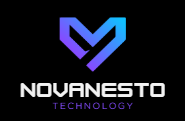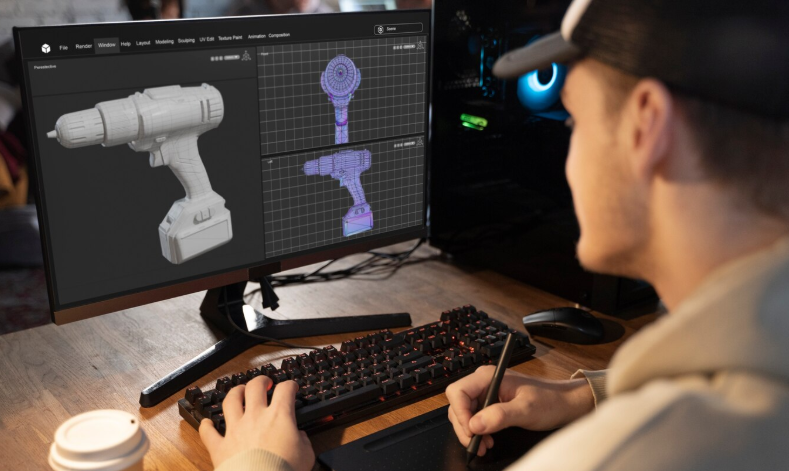The concept of a smart home is no longer a futuristic idea but a present-day reality, thanks to the Internet of Things (IoT). IoT refers to the network of interconnected devices that communicate and exchange data over the internet, allowing them to work together seamlessly. In the context of home automation, IoT is revolutionizing the way we interact with our living spaces, offering greater convenience, efficiency, and security.
From smart thermostats and voice-controlled assistants to connected security systems and smart appliances, the IoT is making homes more intelligent and responsive to the needs of the inhabitants. In this article, we’ll explore how IoT is transforming everyday living and making homes smarter, safer, and more efficient.
1. What Is the Internet of Things (IoT)?
The Internet of Things refers to the interconnection of physical devices through the internet, allowing them to send and receive data. These devices, often equipped with sensors and actuators, are designed to collect data from the environment and communicate it to other devices or centralized systems. By leveraging IoT, these devices can operate autonomously or work together to create a more integrated, responsive system.
In a smart home context, IoT devices can range from appliances and lighting systems to security cameras and thermostats, all of which can be controlled and monitored remotely via smartphones, tablets, or voice assistants.
2. Smart Home Devices Powered by IoT
a) Smart Thermostats
Smart thermostats, such as the Nest Thermostat or Ecobee, use IoT technology to monitor and control your home’s temperature based on your preferences, schedule, and occupancy. These devices can learn your behavior over time, adjusting the temperature to optimize energy usage, reduce waste, and save on heating and cooling costs.
- Example: A smart thermostat might learn that you typically turn down the heat when you leave for work and raise it before you return. By adjusting itself according to your routine, it maximizes comfort and energy efficiency.
b) Smart Lighting Systems
IoT-enabled smart lighting systems, like Philips Hue or LIFX, allow homeowners to control lighting remotely through apps or voice commands. These systems can also be set to adjust automatically based on factors such as time of day or occupancy, providing not only convenience but also energy savings.
- Example: With motion sensors and automated schedules, smart lights can turn on when you enter a room and switch off when you leave, ensuring lights are never left on unnecessarily.
c) Smart Security Systems
One of the most significant impacts of IoT in homes is in the realm of security. IoT-enabled security devices, such as Ring doorbells, Nest cameras, and smart locks, provide homeowners with enhanced surveillance and remote monitoring capabilities. These systems allow real-time video feeds, automatic motion detection, and remote access to security settings.
- Example: A smart doorbell can alert you when someone is at your door, even when you’re not home, and allow you to communicate with them through a smartphone app. Additionally, smart locks can be controlled remotely to grant access to trusted individuals or service providers.
d) Smart Appliances
From smart refrigerators and washing machines to voice-activated ovens and dishwashers, IoT-powered appliances can be controlled and monitored remotely, giving users greater control over their home environment. Many of these devices also come with intelligent features that optimize energy consumption, suggest recipes, or notify you when maintenance is needed.
- Example: A smart refrigerator can notify you when groceries are running low or suggest recipes based on what’s inside. It can also track expiration dates, reducing food waste.
e) Voice Assistants
Voice-activated smart assistants, such as Amazon Alexa, Google Assistant, and Apple Siri, have become the central hub for controlling IoT devices in the home. Through voice commands, users can control everything from lighting and temperature to security systems and entertainment options.
- Example: By saying, “Hey Siri, turn off the living room lights,” users can seamlessly control their home environment without lifting a finger.
3. Benefits of IoT in Smart Homes
The integration of IoT into home automation brings numerous advantages to homeowners, improving convenience, safety, and energy efficiency. Here are some key benefits:
a) Enhanced Convenience
IoT devices offer unprecedented convenience, allowing users to control multiple aspects of their home environment from a single device, often remotely. Whether it’s adjusting the thermostat, checking security cameras, or controlling lights, the ability to do so with a few taps or voice commands saves time and effort.
- Impact: With smart home systems, homeowners can create personalized environments with minimal effort, making everyday tasks easier and more streamlined.
b) Increased Energy Efficiency
One of the most appealing aspects of smart homes is their ability to optimize energy consumption. Smart thermostats, lights, and appliances learn from user behavior and environmental factors to adjust settings that maximize energy savings.
- Impact: IoT devices can help reduce energy waste, lower utility bills, and contribute to sustainability efforts by improving overall energy efficiency.
c) Improved Security and Safety
IoT-powered security systems enhance home safety by providing real-time monitoring and alerts. Smart cameras, doorbells, and locks can send instant notifications to homeowners if suspicious activity is detected. Additionally, smart smoke detectors and water leak sensors can alert homeowners to potential hazards, reducing the risk of damage or injury.
- Impact: With constant monitoring and remote access, homeowners can have peace of mind knowing that their homes are more secure and protected against potential risks.
d) Better Home Management
The interconnected nature of IoT devices allows for more comprehensive and informed home management. For example, smart energy systems can provide detailed reports on how energy is being used in different areas of the home, giving homeowners insights into where they can make improvements.
- Impact: Homeowners can use data from their IoT devices to make better decisions about everything from energy usage to appliance maintenance.
e) Increased Comfort
Smart home devices adapt to the preferences of their users, providing a higher level of comfort. Smart lighting can adjust to the desired brightness, while thermostats can ensure your home is always at the perfect temperature. IoT devices can even learn your habits, providing an environment that feels natural and personalized.
- Impact: With IoT, homes are designed to cater to the comfort of the occupants, reducing manual adjustments and creating a seamless experience.
4. Challenges of IoT in Smart Homes
While the benefits of IoT in smart homes are significant, there are several challenges that must be addressed for widespread adoption:
a) Privacy and Security Risks
As more devices connect to the internet, the risk of cyberattacks increases. Smart devices that collect data on daily habits or store sensitive information could be vulnerable to hacking. Ensuring robust security protocols and data encryption is essential to protect users from privacy breaches.
- Challenge: IoT devices must be designed with strong security features to prevent unauthorized access, and users must remain vigilant about updating software and using secure passwords.
b) Compatibility Issues
With so many IoT devices on the market, compatibility between different brands and platforms can be a challenge. Not all devices are designed to work seamlessly with each other, which can limit the overall functionality of a smart home system.
- Challenge: Homeowners should carefully research devices that are compatible with their existing systems and technologies to ensure smooth integration.
c) High Initial Cost
While the long-term savings on energy bills and increased efficiency can justify the investment, the initial cost of setting up a smart home can be high. Smart appliances, security systems, and home automation platforms often come with a premium price tag.
- Challenge: For some homeowners, the cost of outfitting their homes with IoT devices can be a barrier to entry, although prices are gradually decreasing as the technology matures.
d) Data Overload
As smart devices collect and transmit vast amounts of data, homeowners may feel overwhelmed by the constant stream of information. Managing this data and using it effectively can be difficult for those who are not technologically savvy.
- Challenge: IoT systems must be user-friendly and provide actionable insights without overwhelming the homeowner with excessive or complex data.
5. The Future of IoT in Smart Homes
The future of IoT in smart homes looks promising, with numerous advancements on the horizon that will continue to enhance the functionality, security, and convenience of connected living spaces.
a) AI and Machine Learning Integration
As IoT devices become more intelligent, the integration of AI and machine learning will allow smart homes to learn from user behavior and adapt in real-time. This could lead to even more efficient energy management, predictive maintenance, and personalized experiences.
b) Enhanced Voice Control
Voice assistants are already a significant part of the smart home experience, but in the future, voice control will become even more advanced. AI-driven voice recognition systems will understand more complex commands and better integrate with a wider range of IoT devices.
c) Interoperability Improvements
In the future, there will likely be improvements in the interoperability of IoT devices, allowing them to work seamlessly together regardless of brand or platform. This will make it easier for homeowners to build comprehensive smart home ecosystems without worrying about compatibility issues.
Conclusion
The Internet of Things is reshaping the way we live in our homes, offering more convenience, security, and efficiency than ever before. From smart thermostats and appliances to advanced security systems and voice-controlled assistants, IoT-powered devices are making our living spaces more intelligent and responsive. While there are challenges such as privacy concerns and high initial costs, the benefits of IoT in smart homes are undeniable. As technology advances, we can expect even more innovations that will make our homes smarter, safer, and more connected.


